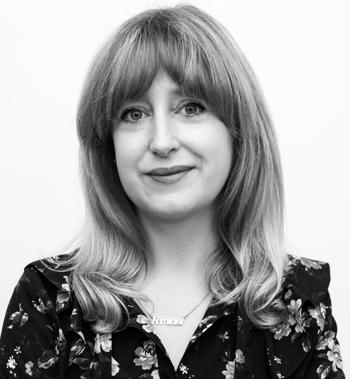
One of the most innovative journalistic experiments Jess Brammar, executive editor of the award-winning digital news organisation HuffPost UK, has been involved in had nothing to do with technology, apps or the internet.
It meant closing down the HuffPost UK newsroom in London for a week and moving the entire team to an empty shop in Birmingham’s Bullring shopping centre.
“It was a kind of social experiment, a journalistic experiment to see what happens to a newsroom if you move the centre of gravity to outside London,” says Brammar who moved to the digital organisation eighteen months ago after being acting editor of BBC’s Newsnight programme.

The Birmingham move was a reflection of something that Brammar says she has been “fascinated by and slightly obsessive about” for a decade – how do you open up the journalism industry and newsrooms to better reflect the people journalists are writing or producing for.
The initial focus was about geography – moving away from London.
“The most surprising and enriching part of the experiment was actually being in the shopping centre because it allowed us to turn up as journalists in a place where people weren’t expecting to come into contact with news,” explains Brammar who worked for five years at ITN and, before that, five years at Question Time.
She believes that a large part of the challenge contemporary journalism is facing is “how to insert themselves into people’s lives” at a time when they are less likely to go into a newsagent to buy a morning paper or sit down to watch the 6pm daily television news.
Stories to tell
So, what happens if you take the news to them?
“What we learnt is that people have a news appetite though they may not call it ‘news’ or ‘consuming journalism’ but they have really interesting stories to tell,” Brammar explains.
“They walked into a bricks and mortar newsroom in an empty shop very much in the way they would have walked into the newsroom or headquarters of a local newspaper,” she adds.
Brammar is very struck by the irony of taking an all-digital newsroom back, albeit temporarily, to the sort of space vacated by many traditional regional and local newspapers in the town centre, but it’s not just about location, it’s just as much about a return to traditional methods of reporting.
She wants to take a digital only newsroom staffed by digital natives back to old-fashioned values of shoe-leather and talking to people on the ground.
“Going out knocking on doors, all the old fashioned stuff that actually in the early days of digital got thrown out the window a bit,” Brammar concedes.
To some extent replaced by rapid processing of press releases and hoovering up social media?
“Exactly, though news gathering via social media is actually an interesting and useful skill but it should never replace newsgathering on the ground if possible,” the HuffPost executive editor believes.
A week in the Bullring last year was an interesting thing to do but was there any legacy? As is happens, yes.
We are competing not just with other news brands for people’s attention, we are also competing with all kinds of entertainment.
Media school
Obviously, the experiment was noticed in Birmingham and came to the attention of Sarah Jones who runs the media school of Birmingham City University who shares Brammar’s ambitions to create a more diverse and representative journalistic workforce.
The result is the creation of the HuffPost Centre for Journalism at the university, which will be officially launched this October.
Brammar envisages a close partnership, with HuffPost helping to create student modules and working with undergraduate and postgraduate students while in turn introducing them to real-time decisions made in the real world of an active newsroom.
But Brammar says she is excited about learning how the students consume news and approach multi-media storytelling “which I suspect will be very different to the way I was trained to think about storytelling.”
Although she is only 37, Brammar still comes from the era when you had to choose whether you were going to be in print or digital.
But where does HuffPost, which began as a digital blog platform founded by, among others, Arianna Huffington 14 years ago before being bought first by AOL and then by Verizon, the American telecommunications group, fit into the media landscape.
It has evolved into a mainstream digital news organisation that has now dropped blogs and paid-for native content in favour of its own commissioned opinion pieces, which it pays for itself.
Although it co-operates with other arms of HuffPost round the world, HuffPost UK operates autonomously, although its night editor is in New York and the New York office has a reporter based in the London newsroom.
Brammar, who has a 45-strong team, could not even if she wanted to, produce “a paper of record” – which she doesn’t – but is determined to produce “really distinctive offerings” within the media landscape not just the digital landscape.
“We are competing not just with other news brands for people’s attention, we are also competing with all kinds of entertainment. I notice on my commute to work people might be looking at Netflix, Twitter or reading The Times app,” says Brammar.
Objectivity is not the same as balance and I don’t think that balancing every point of view is necessarily the way for us to report the truth.
Editorial approach
One of the things that gives her most satisfaction is choosing which stories NOT to cover, instead concentrating on interesting copy that “speaks to readers’ lives” – stories that cut through the clutter on the internet.
Another challenge is to find ways to explain the big running stories such as climate change and Brexit where the audience is really engaged but often flummoxed.
“I do think one of the problems with a lot of newspaper coverage at the moment because the stories (Brexit and climate change) are on-going, they do assume a certain level of knowledge and that leaves a lot of readers behind,” says Brammar.
Often, it’s like coming in during the fifth episode of a drama.
HuffPost tries to address the problem by running regular “explainers”, reminding readers of the basics and, for example, where exactly we are at the moment with no-deal Brexit.
She also brought with her a policy introduced at Newsnight to news meetings – that there is no such thing as a stupid question.
Brammar remembers grand Newsnight meetings where she had to rapidly use her phone to find out who they were all talking about.
She loves asking her young reporters whether they understand what is going on, and if they don’t, commission them to go off and research an explainer which usually turns out to be valuable to readers.
“One of the things we are trying to do here is to reach audiences on their own terms so we are not just expecting them to come to us,” Brammar explains.
We always want to give them utility journalism and tell them things that they can do.
Position in the market
She sees HuffPost as an old-fashioned quality tabloid bringing with it the qualities of old fashioned reporting.
“I would say our closest rival is more the Daily Mirror than BuzzFeed,” says Brammar.
Overall, HuffPost UK regularly averages 7 million unique views, according to Comscore Multi-Platform, 80 per cent of them accessed by mobile.
According to the 2019 Reuters Digital News report, HuffPost is among the most read news brands in the UK and the most trusted digitally-born news brand.
The majority of the HuffPost audience is female – which is good for advertising revenue – and research shows they are engaged on issues such as Brexit, climate change and even Westminster coverage, but also want practical answers to what they can do as individuals. They also consider themselves empathetic and score highly in believing they can change things around them.
“We always want to give them utility journalism and tell them things that they can do. I think I don’t want to overwhelm people with that negative sense that there is no point in doing anything,” says Brammar.
HuffPost UK takes an “unashamedly progressive” rather than party political approach – progressive on everything from gay and trans rights to reproductive rights.
On Brexit, the organisation reports the facts as they understand them without going for artificial balance, something the BBC has been criticised for.
“There was a great deal of soul-searching around the balance issue. It’s tricky,” Brammar concedes of her BBC days.
“Objectivity is not the same as balance and I don’t think that balancing every point of view is necessarily the way for us to report the truth to people and I don’t really want to go any further than that,” says Brammar choosing her words carefully.
She does not come from an obvious journalistic background although her parents met when her mother was the secretary at BBC Radio Sheffield and her father the station’s football correspondent.
Her ambition was to become a nurse but that fell because she didn’t have double science A levels and instead there were two “horrendous” years on a data entry job at Norwich Union before escaping to the London School of Economics.
Her first job in the media was as a researcher on Question Time.
While acting editor of Newsnight, she was responsible for major stories such as Grenfell and then left Newsnight two weeks after the appointment of Esme Wren as the programme’s new editor.
Brammar did not, however, leave in a fit of pique. She did not apply for the job and was exhausted after years of late nights and was looking for a new challenge.
“Maybe one day,” she says of the top Newsnight job.
She came to HuffPost for the journalistic challenge of trying to cut through and make an impact in the endless digital ecosphere.
Brammar is now 18 months into what she initially thought would be a two to three year job. Now it feels as she has only just begun as she plans “more really impactful scoops” and policy-changing journalism with real world impact that will be noticed – not least by journalistic peers.
“I think I have spent the last year and a half working out and stating what we are and what we are here for and now I am ready to relax and do it,” says Jess Brammar.
She also brought with her a policy introduced at Newsnight to news meetings – that there is no such thing as a stupid question.
This article was first published in InPublishing magazine. If you would like to be added to the free mailing list, please register here.












